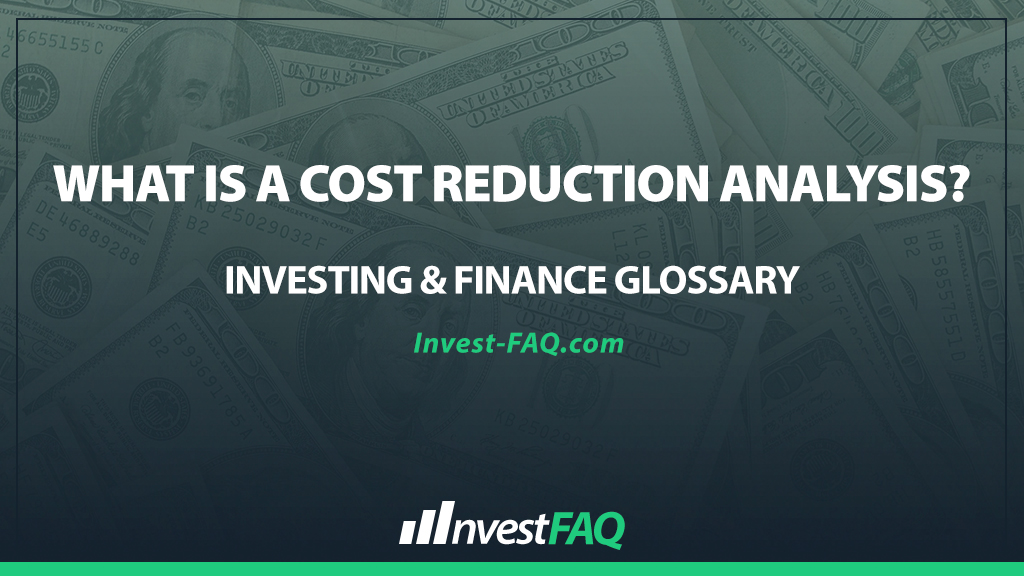
Cost Reduction Analysis
Contents
A cost reduction analysis is a strategic review process aimed at identifying and implementing ways to reduce expenses and increase efficiency without compromising the quality of products or services. This analysis involves evaluating all aspects of a business’s operations to pinpoint areas where costs can be minimized through process improvements, resource optimization, or the elimination of waste.
In the competitive business landscape, maintaining profitability often hinges on a company’s ability to effectively manage and reduce costs. Cost reduction analysis is employed across various sectors to enhance operational efficiency, improve profit margins, and sustain competitive advantage.
It is particularly crucial for companies facing financial pressures, seeking to improve their market position, or aiming to pass savings onto customers to boost sales and customer satisfaction.
Example of a Cost Reduction Analysis
Consider “Efficient Manufacturing Inc.,” a company that produces electronic devices. During a cost reduction analysis, it was found that the company could switch to a less expensive supplier for raw materials without sacrificing quality, saving $200,000 annually. Additionally, by optimizing the production process, the company could reduce labor costs by $100,000 and decrease energy consumption, saving another $50,000 per year.
In this scenario, Efficient Manufacturing Inc. identified significant cost-saving opportunities through a comprehensive cost reduction analysis. The switch to a more cost-effective supplier and the optimization of the production process did not only result in direct cost savings but also contributed to a more efficient use of resources.
These measures improved the company’s overall profitability and competitive positioning by lowering the production costs of their electronic devices, potentially allowing for more competitive pricing or higher profit margins.
Types and Uses in Business Scenarios
Cost reduction analysis can be applied in various business scenarios, including:
Supply Chain Optimization: Reviewing and optimizing supply chain operations to reduce costs associated with procurement, transportation, and inventory management.
Operational Efficiency: Streamlining production processes, reducing waste, and improving labor productivity.
Overhead Expense Management: Identifying and reducing unnecessary administrative and operational expenses.
Energy and Resource Conservation: Implementing energy-saving measures and sustainable practices to reduce utility costs.
These applications demonstrate the versatility of cost reduction analysis in improving different facets of business operations.
Significance for Investing & Finance
From an accounting perspective, cost reduction analysis is significant for several reasons:
Financial Planning and Analysis (FP&A): It supports strategic financial planning by providing insights into potential cost savings, impacting budgeting and forecasting.
Profitability Management: By identifying cost-saving opportunities, companies can improve their bottom line, enhancing shareholder value.
Performance Metrics: Cost reduction initiatives can be quantified and tracked as part of performance metrics, aligning operational efficiency with financial goals.
In summary, a cost reduction analysis is a critical tool for businesses aiming to enhance profitability and efficiency.
Through careful evaluation of operational processes and cost structures, companies can identify strategic opportunities to reduce expenses, thereby strengthening their financial position and competitive edge in the market.
FAQ
What are the first steps in conducting a cost reduction analysis in a manufacturing setting?
The first steps involve reviewing the current production processes and cost structures to identify major cost centers, followed by analyzing specific areas where inefficiencies or unnecessary expenditures are occurring.
How can technology impact the outcomes of a cost reduction analysis?
Incorporating new technologies or upgrading existing systems can streamline operations and automate tasks, leading to significant long-term savings identified during a cost reduction analysis.
Can cost reduction analysis lead to a reduction in workforce?
While cost reduction analysis may identify opportunities for workforce optimization, the primary goal is to enhance efficiency and productivity, which can sometimes be achieved through retraining, reallocating, or optimizing labor rather than reductions.
What role does sustainability play in cost reduction analysis?
Sustainability initiatives can play a key role in cost reduction analysis by identifying ways to reduce waste, conserve resources, and utilize more energy-efficient processes, leading to significant cost savings and environmental benefits.
